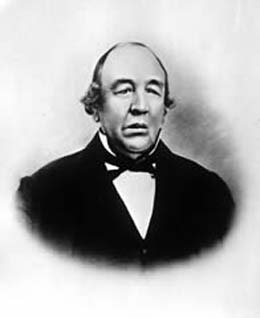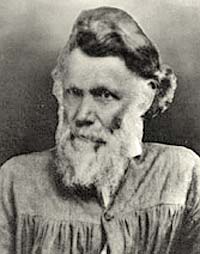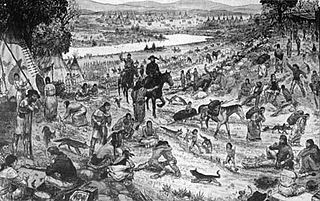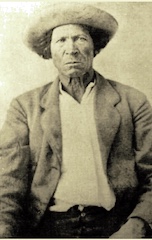Antoine Godin (c. 1805-1836), an Iroquois Canadian fur trapper and explorer, is noted primarily for the public murder of a Gros Ventre chief which led to a battle between fur traders and Indians in Pierre's Hole, now called the Teton Basin, in eastern Idaho.
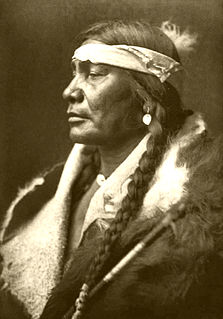
The Gros Ventre, also known as the Aaniiih, A'aninin, Haaninin, and Atsina, are a historically Algonquian-speaking Native American tribe located in north central Montana. Today the Gros Ventre people are enrolled in the Fort Belknap Indian Community of the Fort Belknap Reservation of Montana, a federally recognized tribe with 3,682 enrolled members, that also includes Assiniboine people or Nakoda people, the Gros Ventre's historical enemies. The Fort Belknap Indian Reservation is in the northernmost part of Montana, just south of the small town of Harlem, Montana.

Pierre's Hole is a shallow valley in the western United States in eastern Idaho, just west of the Teton Range in Wyoming. At an elevation over 6,000 feet (1,830 m) above sea level, it collects the headwaters of the Teton River, and was a strategic center of the fur trade of the northern Rocky Mountains. The nearby Jackson Hole area in Wyoming is on the opposite side of the Tetons.
Initially employed by the British Northwest Fur Company, Godin and his father Thyery were among the Iroquois Indians hired because of skills as trappers, hunters and boatmen. From the Montreal area, Godin and his father may have been among forty mostly Iroquois recruits that Joseph LaRocque, of the Northwest Fur Company, brought from Canada to the Rocky Mountains and the Northwest in 1817. In 1821 the Northwest Fur Company and their employees merged with the Hudson's Bay Company.

The Iroquois or Haudenosaunee are a historically powerful northeast Native American confederacy. They were known during the colonial years to the French as the Iroquois League, and later as the Iroquois Confederacy, and to the English as the Five Nations, comprising the Mohawk, Onondaga, Oneida, Cayuga, and Seneca. After 1722, they accepted the Tuscarora people from the Southeast into their confederacy and became known as the Six Nations.

The Hudson's Bay Company is a Canadian retail business group. A fur trading business for much of its existence, HBC now owns and operates retail stores in Canada, the United States, and parts of Europe including Belgium, the Netherlands, and Germany. The company's namesake business division is Hudson's Bay, commonly referred to as The Bay. Other divisions include Galeria Kaufhof, Home Outfitters, Lord & Taylor and Saks Fifth Avenue. HBC's head office is currently located in Brampton, Ontario. The company is listed on the Toronto Stock Exchange under the symbol "HBC".
Antoine Godin was probably born prior to 1810, as he is mentioned in the 1825 journal of Hudson's Bay officer Peter Skene Ogden in the northern Rocky Mountains. At this time, Thyery Godin had already left his British employer to join American fur trappers at the urging of Johnson Gardner, an associate of William H. Ashley. The Americans promised those who defected from the British higher prices for their furs as well as lower charges for goods and supplies. This campaign resulted in twenty-three Iroquois and Canadian freeman, and their fur caches, joining the Americans. Instead of simply deserting, Antoine Godin met with Ogden to request a release from his obligation to the Hudson's Bay Company. Ogden wrote ...being a worthless scamp, I gave him his liberty...

Peter Skene Ogden, was a fur trader and a Canadian explorer of what is now British Columbia and the American West.

The Rocky Mountains, also known as the Rockies, are a major mountain range in western North America. The Rocky Mountains stretch more than 4,800 kilometers (3,000 mi) from the northernmost part of British Columbia, in western Canada, to New Mexico in the Southwestern United States. Located within the North American Cordillera, the Rockies are somewhat distinct from the Pacific Coast Ranges, Cascade Range, and the Sierra Nevada, which all lie farther to the west.
In either 1828 or 1830, Godin's father was slain by Blackfoot Indians, leaving Antoine with a vindictive hatred for all Blackfeet and their allies.
While traveling to the 1832 rendezvous at Pierre's Hole, Godin and his party came across trapper Thomas Fitzpatrick, emaciated with his feet bare, and his clothing in shreds, traveling without horse or equipment. Fitzpatrick had been attacked and robbed several weeks earlier by Blackfeet when he had ridden ahead of a pack train to alert the rendezvous of their eminent arrival. Godin brought Fitzpatrick in to the rendezvous at a time when many had given Fitzpatrick up for dead.

Thomas Fitzpatrick, known as "Broken Hand", was a famous "mountain man", "friend of the Indians", trailblazer and trapper with the Rocky Mountain Fur Company. With Jedediah Smith, he led a trapper band that discovered South Pass, Wyoming; however, before that Robert Stuart led the first known white party through the South Pass.
By 1834 an entry in one of Fort Hall, Idaho's account books indicates that Godin was employed by Nathaniel Wyeth. The note stated that Godin was not reliable, and should have only limited credit. Other entries in the account book show that Godin was a meat hunter for the fort from 1834 to mid-1836.
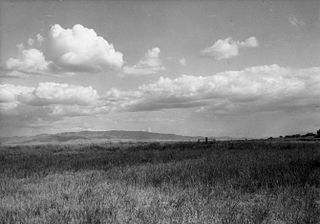
Fort Hall was a fort that was built in 1834 as a fur trading post by Nathaniel Jarvis Wyeth. It was located on the Snake River in the eastern Oregon Country, now part of present-day Bannock County in southeastern Idaho, United States. Mr. Wyeth was an inventor and businessman from Boston, Massachusetts, who also founded a post at Fort William, in present-day Portland, Oregon, as part of a plan for a new trading and fisheries company. Unable to compete with the powerful British Hudson's Bay Company, based at Fort Vancouver, in 1837 Wyeth sold both posts to it. Great Britain and the United States both operated in the Oregon Country in these years.
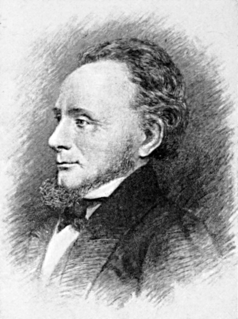
Nathaniel Jarvis Wyeth was an American inventor and businessman in Boston, Massachusetts who contributed greatly to its ice industry. Due to his inventions, Boston could harvest and ship ice internationally. In the 1830s, he was also a mountain man who led two expeditions to the Northwest and set up two trading posts, one in present-day Idaho and one in present-day Oregon.
On May 22, 1836, Godin was invited to trade for furs by a Metis man named James Bird, but was shot without warning by one of Bird's Blackfoot companions prior to trading. Although unable to save Godin, men from the fort were able to retrieve his personal effects. Godin's blanket, rifle, and other goods were shown as credits towards his account in the fort's ledger on May 23, 1836.


